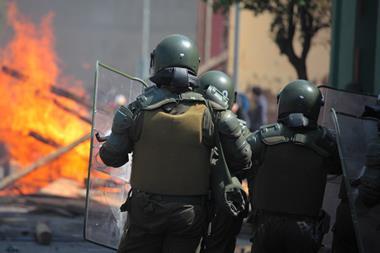The Ukraine conflict is impacting both the country and bordering regions in a number of ways - International SOS
International SOS has released its annual interactive Risk Map 2023, designed to help organisations and their mobile workers better understand the risk level of each country around the world.
With the ongoing impact of COVID-19 and the security conflict in Ukraine, the risk map provides invaluable information to enable organisations to recognise and understand the specific ways these risks may impact their employees.
Dr Irene Lai, medical director at International SOS comments, “With travel and health risks on the rise in many regions, it is important for organisations to also focus on mitigating the ongoing impact of mental health issues.
“Although other acute medical issues which may have a significant impact regularly arise, mental health problems remain in the background and cannot be overlooked.
“Organisations must handle multiple physical and mental health issues to effectively maintain their Duty of Care responsibilities.”
Crisis in Ukraine brings variation to the European security situation
The major security crisis from the past year has undoubtedly been the conflict in Ukraine. This has been reflected in the security focused map, as parts of Ukraine are now marked as having an ‘Extreme’ level of security risk.
Sally Llewellyn, security director at International SOS comments, “The security crisis in Ukraine has clearly been significant, impacting both the country and bordering regions in a number of ways.
”At International SOS, we have organised evacuations for large multinationals, helping some of their workforce leave Ukraine where necessary. We also support organisations who have remained in Ukraine, providing on-the-ground assistance and timely information on the risks which may impact them.
“This is particularly important for NGOs, for the media, and for professional services companies, where many Ukrainian employees now want to return home to visit loved ones.”
Despite the wide-reaching impact of the Ukraine conflict and the rise in social unrest associated with cost-of-living increases, the underlying security risk environment across Europe has not changed.
Travel anxiety higher post COVID
Outside of Ukraine the most notable risk rating increases have been in the Sahel where extreme security risk zones have expanded due to the rising risk of militancy – a trend also notable in Mozambique and other parts of Africa.
Whilst in Colombia, a rise in criminality resulting in part from the socio-economic impacts of the COVID-19 pandemic has led to an increase in high-risk zones.
Employees are more attuned to risks, and many are now more anxious about travel than pre-pandemic. Organisations must account for risk rating changes and trends in their planning.
Managers should ensure employees have access to reliable information about the risks they may face, support with effective mitigation measures, and provide clear communication plans for employees before and during higher risk travel.




















No comments yet